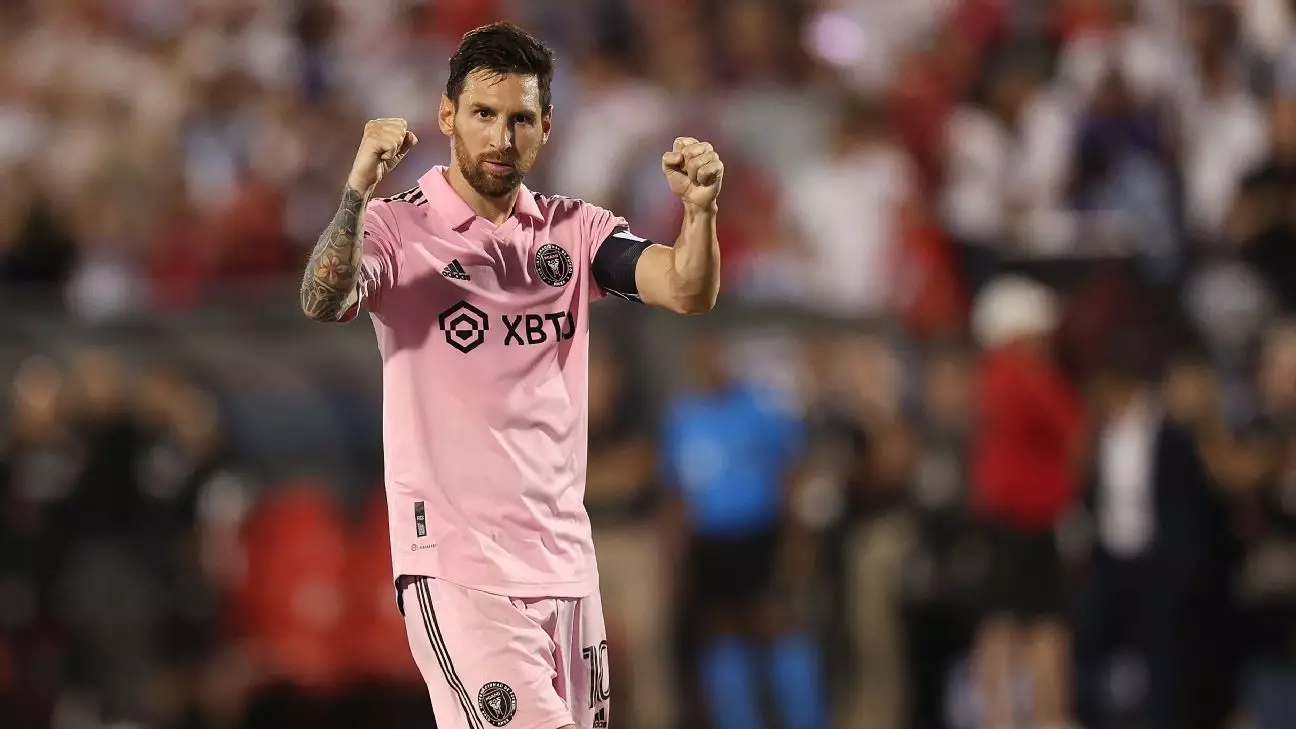The arrival of Lionel Messi at Inter Miami CF has undoubtedly sent shockwaves throughout Major League Soccer (MLS). The impact of this superstar athlete transcends mere statistics; it has reshaped the entire landscape of fan engagement, marketing strategies, and attendance records across the league. While Messi’s talent on the pitch is well-acknowledged, the reverberations from his presence and the excitement surrounding him evoke comparisons to legendary figures in sports history, akin to Michael Jordan’s influence on basketball. As the league prepares for Messi’s potential farewell season, MLS finds itself navigating uncharted waters with unprecedented fan engagement and record attendance figures.
In an industry often criticized for its reactive measures, MLS has vividly showcased how proactive strategies can capitalize on the Messi phenomenon. For instance, the Vancouver Whitecaps recently took the extraordinary step of announcing that Messi and other stars from Inter Miami would not be playing in an upcoming match. While this might seem counterintuitive, the Whitecaps effectively turned potential disappointment into an opportunity by offering a 50% discount on stadium concessions—a move that garnered significant media attention and fan interest. Such strategies indicate an unprecedented willingness from teams to engage with their audiences meaningfully, even if the face of disappointment arises.
The flexibility demonstrated by MLS teams was notable in 2023 when the Chicago Fire introduced an attractive compensation package to their fans, offering discounts on future tickets should Messi not play. The allure of Messi brought record attendance, showcasing that even without his participation, clubs could benefit significantly from the heightened anticipation he generates.
As word of Messi’s arrival spread, MLS clubs recalibrated their strategies regarding venue choices. Sporting Kansas City, known for their intimate soccer-specific stadium, opted for the massive Arrowhead Stadium to accommodate the surge in fans eager to witness Messi play. While their home venue holds just under 19,000 fans, the move to Arrowhead highlighted an extraordinary demand, leading to a sold-out crowd of over 72,000. Ticket prices surged, exemplifying the commercial opportunities derived from Messi’s participation and the allure of Inter Miami.
Charlotte FC and Atlanta United displayed similar strategies when hosting Miami, as both large NFL stadiums opened their gates wider to accommodate newly inspired fans. The marketing performed at this scale signifies a concerted effort by teams to not merely fill seats, but to enhance the game-day experience by capitalizing on the Messi hype, which could deeply impact a team’s financial outlook.
The fandom surrounding Messi does not merely stop at the stadium gates; it profoundly influences tickets’ resale value and spectator experiences. For smaller venues like CF Montreal’s Saputo Stadium, ticket prices skyrocketed to an average of $465 when Inter Miami came to town. It illustrates Messi’s ability to transform even the smallest stadiums into highly lucrative events, fueling a resale market that thrives on the excitement of seeing a living legend play.
Fans dressed in all sorts of colorful costumes and regalia underscore the palpable energy with every encounter of Miami’s squad. The juxtaposition of average attendance of roughly 36,000 traditionally versus the 66,000-74,000 range during Messi’s appearances speaks volumes of his drawing power and the transformational potential he has on dubbed lesser games.
Looking toward the future, the suspense surrounding Messi’s final season in MLS has foundational implications for the league’s trajectory. Anticipation for potential record-breaking attendances and marketing phenomena underlies the engagements of clubs as they scour fresh and innovative ways to reach their audiences while maximizing financial opportunities.
Peter Vermes, the celebrated coach of Sporting Kansas City, reflected on the momentous shift in fan culture and engagement that Messi’s presence has sparked. Similar recollections from fellow coaches and executives around the league reinforce the notion that Messi’s impact is simply unmatched in contemporary soccer. As MLS continues to evolve, the ramifications of Messi’s participation extend far beyond the goalposts, redefining how teams interact with their fans.
As Major League Soccer prepares for the future, the legacy of Lionel Messi remains a focal point. Potentially facing his last season, teams are gearing up for yet another wave of excitement driven not only by his unmatched skills but also by the momentous changes he continues to inspire within the league. The fan base, attendance figures, and sponsorship avenues will likely adapt, thriving under the gravitational pull of Messi’s extraordinary legacy. In the years to come, as MLS embraces new heights, it will remember this transformative period as a gold standard in fan engagement, paving the way for future sporting phenomena.

